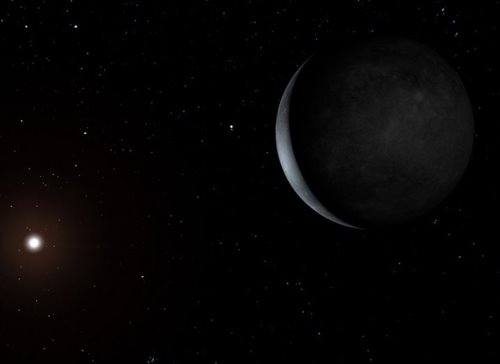 Image: © serawood/Stock.adobe.com
Image: © serawood/Stock.adobe.com
Now that exoplanets are being found in their thousands across the universe, the International Astronomical Union (IAU) has been able to offer people across Earth the opportunity to name these alien worlds. This was part of the IAU’s NameExoWorlds project – to mark its 100th anniversary – which saw more than 360,000 proposals for names from more than 110 countries.
Among those who had their proposed names selected was John Murphy, a teacher at Regina Mundi College, Cork. He got to name a star system after the mythological Irish dogs Bran and Tuiren from the fable, The Birth of Bran. Each system that a nation names is visible from that country and is sufficiently bright to be observed through small telescopes.
The star HAT-P-36 will be named Tuiren, while its nearby exoplanet, HAT-P-36b, will be named Bran. All of the exoplanets given new names as part of the project are likely to be large gas giants, discovered by two methods. These included the transit method – where planets pass in front of their star – and the radial velocity method, where careful measurements of a star’s spectrum show whether it is wobbling under the influence of the gravity of its planets.
‘They are everywhere’
Elsewhere around the world, the IAU encouraged speakers of indigenous languages to propose names for exoplanets to mark the UN 2019 International Year of Indigenous Languages. Among those who submitted names was a teacher and community leader of the Moqoit people, based in Argentina.
They named the exoplanet HD-48265-b, Naqaya, and the star HD-48265, Nosaxa. These mean ‘brother-family relative’ (referring to all humans as ‘brothers’) and spring (literally, new year), respectively, in Moqoit language.
“The number of discoveries continues to double about every 2.5 years, revealing remarkable new planet populations and putting our own Earth and solar system in perspective. Statistically, most of the stars in the sky are likely to be orbited by their own planets – they are everywhere,” said Eric Mamajek, co-chair of the NameExoWorlds steering committee.
“While astronomers catalogue their new discoveries using telephone-number-like designations, there has been growing interest amongst astronomers and the public alike in also assigning proper names, as is done for solar system bodies.”
Colm Gorey
This article first appeared on www.siliconrepublic.com and can be found at:
https://www.siliconrepublic.com/innovation/cork-teacher-exoplanet-star-irish-mythical-dogs



